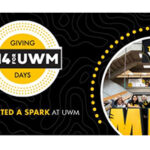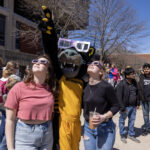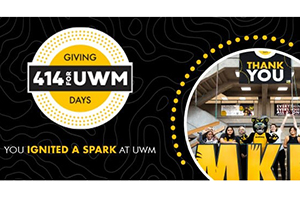When UWM’s undergraduate literary journal, Furrow, put out a call for submissions in December 2017, no one expected to receive over 1,000 submissions from writers around the United States and the world. In previous years, the journal received around 150 works of poetry, fiction, creative nonfiction and art annually.
“We’ve wanted to get bigger and have a more national presence for a while, but we weren’t expecting it to happen so quickly,” said Valerie Laken, the faculty advisor for Furrow and an associate professor of English.
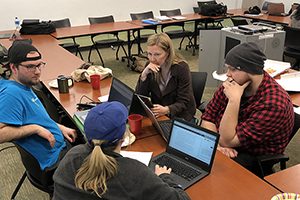
From the mountain of submissions, the journal’s 14 student editors have put together a 156-page magazine showcasing the work of 44 writers. Furrow will host a release party on Wednesday, May 9, from 5 to 7 p.m. at Art Bar at 722 E. Burleigh St., Milwaukee. The magazine will be available for purchase, and there will be brief readings by several contributors.
Started as a student organization in 1999, Furrow is now produced each spring through UWM’s English 418: Literary Journal Production class, which undergraduates can take for three credits.
Laken credits this year’s increase in submissions in part to the work of students who researched and developed a contact list for creative writing and art faculty at major universities around United States. The journal’s editors were able to send out two mass calls for submissions to over 600 instructors.
“I had to be very critical in deciding if a story was promising and in deciding which pieces would make the final cut,” said Jessie Choinoski, a nonfiction editor and publicist at Furrow and a senior, majoring in English. “I had to become a more critical reader.”
Laken hopes that Furrow gives student writers experience submitting their work for publication and working with editors.
“I hope our contributors get that vital encouragement that somebody out there believes in their work,” she said.
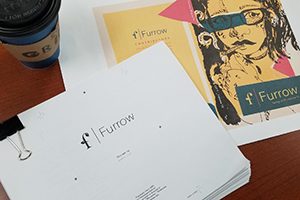
In addition to producing a magazine, Furrow’s editors get experience with software such as WordPress, MailChimp, Adobe InDesign and Photoshop. They also develop skills with professional communication and collaboration by contacting contributors with edits and working in collaborative teams.
“It’s a little like running a small business, but everyone is always learning how to do their jobs,” Laken said. “The students learn that crucial skill that young professionals need: how to teach yourself how to do things. When you’re in your first job, you’ll have to figure out how to do things on the fly.”
Over the course of the semester, students work in positions where they read and edit submissions, write for the journal’s blog, edit Furrow’s website, design the print magazine’s layout, copy edit content and do publicity, fundraising and event-planning work.
“It’s a professional experience in an educational setting,” Choinoski said. “It’s like your first professional job, but with a little more leniency to make mistakes and learn from them.”
Malachi Lyonsdove, a senior majoring in English, who’s the development officer and fundraising strategist at Furrow, said that he was “getting skills that I wouldn’t learn in any other English classes. This is so different because there’s a finished product at the end of the semester. We get to hold this physical publication in our hands and say, ‘I worked on this thing, and people are actually going to want to buy it.’”
